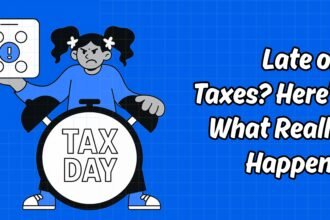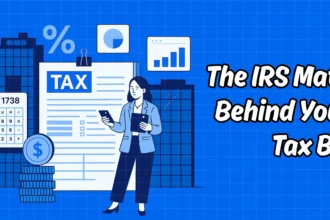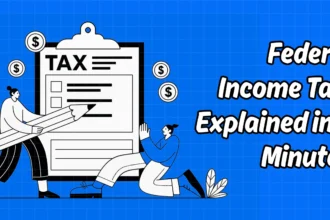Key Takeaways
- Tax brackets determine how much of your income is taxed at each rate—not the total income.
- The U.S. uses a progressive tax system, so higher income earns higher rates on that extra money.
- In 2025, there are seven federal tax brackets ranging from 10% to 37%.
- Only the income within each bracket is taxed at that bracket’s rate.
- Your effective tax rate is usually much lower than your highest bracket.
- Understanding brackets helps you plan smarter for deductions, credits, and refunds
Introduction
Let’s be honest—tax brackets confuse almost everyone. You’ve probably heard someone say, “I don’t want a raise—it’ll bump me into a higher bracket!” But that’s misunderstanding things. The U.S. tax system is progressive, meaning your entire income isn’t taxed at the same rate. In this guide, we’ll walk through how federal tax brackets work in 2025, explain how much tax you actually pay, and clear up the biggest myths. By the end, you’ll know exactly what it means to “be in a tax bracket”—and how to make that work for you.
What Are Federal Tax Brackets?
Tax brackets are income ranges that determine the percentage of each dollar you owe the IRS. Think of your income as a layer cake—the bottom layer is taxed at the lowest rate; each higher layer is taxed more. Unlike a flat tax, you don’t pay 37 percent on every dollar just because you make over a certain threshold.
In a progressive system, your income is broken up. The first slice gets taxed at 10%, the next at 12%, and so on. That means two people earning the same income might owe different amounts if one has deductions or credits.
Tax brackets also help explain why people fear “bracket creep.” But as we’ll show, a raise won’t suddenly shoot your total tax rate—only the extra income goes into the higher bracket.
Understanding brackets sets the foundation. It helps explain why planning deductions or delaying income matters. And it shows why the marginal rate (your top bracket) isn’t as scary as it sounds.
2025 Federal Tax Brackets at a Glance
Here’s a clear table showing the 2025 federal tax brackets by filing status. Remember: you only pay each rate on the income that falls within that specific range.
| Rate | Single | Married Filing Jointly | Head of Household |
|---|---|---|---|
| 10% | $0 – $11,925 | $0 – $23,850 | $0 – $17,000 |
| 12% | $11,926 – $48,475 | $23,851 – $96,950 | $17,001 – $64,850 |
| 22% | $48,476 – $103,350 | $96,951 – $206,700 | $64,851 – $103,350 |
| 24% | $103,351 – $197,300 | $206,701 – $394,600 | $103,351 – $197,300 |
| 32% | $197,301 – $250,525 | $394,601 – $501,050 | $197,301 – $250,500 |
| 35% | $250,526 – $626,350 | $501,051 – $751,600 | $250,501 – $626,350 |
| 37% | $626,351+ | $751,601+ | $626,351+ |
These brackets reflect inflation adjustments for 2025—keeping the structure from previous years but shifting thresholds slightly upward. For example, a single filer earning $60,000 pays 10% for the first $11,925, 12% for the next $36,550, and 22% for the remaining $11,525. That totals about $8,113 before deductions or credits, meaning an effective tax rate around 13.5%.
Understanding this table helps you see exactly which parts of your income fall into which tax rate—and why a raise doesn’t suddenly increase tax on all your earnings.
Marginal Tax Rate vs. Effective Tax Rate
Almost everyone confuses their marginal tax rate (the highest rate you pay on the last dollar earned) with their effective tax rate (what you actually pay overall).
For instance, if you’re a single filer with $60,000 in taxable income, you’re in the 22% bracket—but that doesn’t mean every dollar is taxed at 22%. That rate applies only to the portion above $48,475. Your effective rate is closer to 13.5%, which is the average you end up paying .
Here’s why that matters: it means earning more won’t boot your entire income into a higher bracket. Only the income within that higher bracket is taxed more. That makes being “in a bracket” feel less intimidating.
Knowing your marginal rate helps with decisions like, “If I earn another $1,000, I’ll keep about 78¢ of it after taxes.” Your effective rate, however, gives you the big-picture sense of what you’re paying on all your income.
Understanding both helps you plan smarter—like timing bonuses or deciding whether a deduction or retirement contribution will actually save you money.
How Brackets Affect Real Tax Bills
Here’s what it looks like in practice. Let’s say you’re a single filer with $60,000 in taxable income in 2025. Here’s how your tax breaks down using the bracket table:
- 10% on the first $11,925: $1,192.50
- 12% on the next $36,550: $4,386
- 22% on the remaining $11,525: $2,535.50
Your total comes to about $8,114 before deductions or credits. That’s how much you owe the IRS on $60,000—not simply 22% of the whole amount. This step-by-step breakdown shows why only the bits of income in each bracket get taxed at that bracket’s rate. (taxfoundation.org)
This example clears up confusion. You don’t owe 22% on all $60,000—just the portion above $48,475. Moving between brackets affects only your next dollar, not everything. That’s the beauty of a progressive system.
How Deductions and Credits Shift You Between Brackets
Deductions and credits are tools that help you lower your tax, and sometimes they even prevent your income from hitting higher brackets.
Imagine you earn $75,000 and take the standard deduction of $15,000. That puts you in the $60,000 taxable income scenario above—leaving much of your earnings taxed at lower rates. But what if you also contribute $5,000 to a traditional IRA? That knocks your taxable income down to $55,000.
That IRA contribution saved you more than $1,100 in tax (because that $5,000 would’ve been taxed at 22%) . Plus, it reduced your AGI, which could make you eligible for other tax breaks—like the Saver’s Credit or education credits.
Tax credits, meanwhile, hit your tax bill rather than income. Say after deductions your base tax is $8,000. If you qualify for a $2,000 Child Tax Credit, your bill drops to $6,000—no shrinking of taxable income required.
By strategically combining deductions (standard or itemized) with credits, you control not just how much you pay in tax, but which brackets your income touches. That means more control over your tax outcome.
Why Understanding Tax Brackets Can Save You Money
Knowing how tax bracket’s function gives you a tool for financial planning, not just an intimidating number. You can time income, bunch deductions, or make pre-tax contributions to smartly manage your tax bracket usage.
Imagine you expect a bonus in December. You could defer it to January to reduce taxable income in the current year, keeping more of it taxed at lower rates. Or, consider bunching charitable donations—making two years’ worth of contributions in one year so your total itemized deductions exceed the standard deduction. That timing can drop more income into a lower bracket.
Contributions to retirement accounts or an HSA reduce your taxable income—and might prevent you from entering a higher bracket entirely. Even delaying gig income or capital gains until a lower-income year can keep you from feeling the pinch of a higher marginal rate. Each strategy taps into the bracket system to maximize take-home pay.
When you wrap your head around bracket thresholds, you realize they’re not traps—they’re levers you can pull to minimize taxes and keep more money working for you.
Bottom Line – Tax Brackets Aren’t the Enemy
Tax brackets don’t punish you—they make taxes fairer. Remember, only portions of your income get taxed at higher rates. Your marginal rate applies to extra income, while your effective rate reflects the average you actually pay.
By knowing how brackets work—and how deductions and credits affect them—you can plan smarter. Whether that’s timing income, maximizing retirement contributions, or strategically bunching deductions, you’re in control. Tax brackets aren’t the enemy—they’re tools. Learn to use them, and you’ll not just comply—you’ll optimize and thrive financially in 2025.








